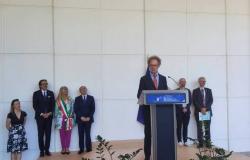Numerous researchers are engaged in studying the shape of the universe: 18 possibilities and here’s what to know to understand something about it
We are used to thinking of the universe as infinite, but it may actually have a mappable topology. In order to simplify everything, we talk about a donut universe (hyperdimensional). However, this represents only one of the many possibilities of the real topology of the cosmos in which we live.
Being able to guarantee an answer that is as certain as possible represents one of the most ambitious projects in the international scientific world. Here are the words of Yashar Akrami of the Institute of Theoretical Physics of Madrid: “We are trying to find the shape of space”.
In this Akrami is not alone, on the contrary. He is in fact part of an international partnership known as Compact (Collaboration for Observations, Models and Predictions of Anomalies and Cosmic Topology). In May 2024 the team explained how the question of shape of the Universe is more open and undefined than ever. In fact, we work to propose different perspectives.
Donut universe
It is difficult to imagine that the universe could have a precise shape. In the donut theory it is also necessary to take into account the curvature. In fact, in the theory of general relativity of 1916, Albert Einstein demonstrated how space can be curved by massive objects.
Imagining space as two-dimensional, placing a sheet of paper on a table and pretending it represents the whole cosmos, we could easily think of curved space as the surface of a sphere (positive curvature) or a saddle (negative curvature).
If on a sheet of paper the angles of a triangle must add up to 180 degrees, on a curved surface this is no longer the case. By comparing the actual and apparent sizes of objects such as galaxies, astronomers are able to see that the our universe looks like a flat sheet with small dimpleswhere every star deforms the space around it.
“Knowing what the curvature isthey know each other types of possible topologies,” Akrami explained. Flat space could go on forever, just like a sheet of paper with no beginning or end. Mathematically exist 18 possibilities. In general, they correspond to the universe with a finite volume but no edges: if you travel farther than the scale of the Universe, you end up back where you started. Also in this case, as for the donut, the concept is simplified by thinking of the screen of a video game in which a character vanishes from the right side, only to reappear “back”, in the left section. In this case it can be assumed that the screen is twisted into a loop.
In 3 dimensions, the simplest of the hypothesized topologies is the 3-torus: in this case we would be immersed in a “box” from which, exiting from any side, we re-enter from the opposite one.
Based on the indicated topology, a very particular implication stands out. Hypothetically given the chance to look across the entire universe, you would see infinite copies of yourself in all directions. A sort of infinite 3D hall of mirrors.
Other topologies are more complex and they are in fact variations on the same theme. The images appear slightly shifted. With reference to the faces of the box, we enter at a different point or perhaps with rotation such that the right becomes the left.
Shape detection
If the universe were truly immense but not infinite, we might never be able to distinguish between the two concepts. If instead the universe endedwith certainty of a given length (at least in some directions) and not much larger than we can actually “see”, we should be able to detect its shape.
One of the best ways to do this is observe the cosmic microwave background (CMB). The glow of heat left behind by the big bang itself, filling the cosmos with microwave radiation. There CMBfirst detected in 1965, represents one of the key pieces of evidence that the Big Bang actually occurred.
Uniform throughout almost the entire universe but astronomers, thanks to the technological development of modern telescopes, have detected small variations in the “temperature”, however tiny. These are remnants of random “temperature” differences in the nascent universe. Differences that have contributed to the emergence of structure, so that matter is not uniformly distributed throughout the cosmos.
There CMB therefore guarantees a sort of map of what our universe looks like in what was its first phase, approximately 10 billion years ago. The latter is imprinted in the sky that is all around us. If the cosmos had a non-trivial topology and produced copies in some or perhaps all directions, or if perhaps its volume was in fact not much larger than the “sphere” on which we see the projection of the CMB, such copies should leave traces in the temperature variations. Our chance to get an answer.





